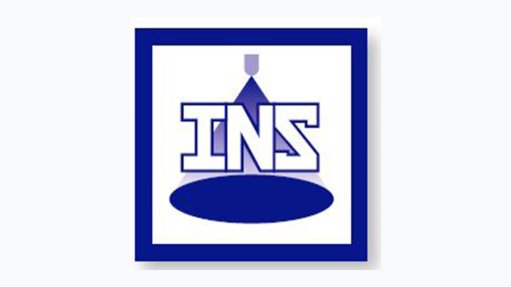Cell C completes migration to third-party networks ahead of end-of-2023 target date
Communications group Cell C has completed its network migration ahead of schedule, opening access to about 14 000 towers countrywide, 12 000 of which are fourth-generation and long-term evolution-enabled.
In what has been described as a significant milestone for Cell C, the migration has effectively increased the company’s network access nearly threefold in less than three years, from 5 500 to 14 000 towers.
“We are the first mobile operator to think about our network strategy differently and instead of trying to build out an expensive and unsustainable network, we chose to become a buyer of network services,” says Cell C CTO Schalk Visser, highlighting that the market now comprises those that own infrastructure and those that buy infrastructure as a service.
Cell C, which was launched in 2001 and has struggled to reach a profitable level since establishment, actively focused on optimising its network operating expenses (opex) and steadily decreasing capital expenditure (capex) as it transitioned its network onto third-party networks in an effort to decrease infrastructure costs.
Cell C started migrating its customers on to the partner networks in January 2021, with post-paid customers to roam on the Vodacom network and prepaid customers on MTN’s network, under a three-year transition to virtual radio access networks (RAN) during the second phase of its expansive three-phase turnaround plan from 2019 to 2024.
The exit from the capital-intensive infrastructure market and leveraging MTN and Vodacom’s networks for roaming has enabled a reduction in opex, with a new capex-light infrastructure model ensuring a sustained liquidity position for the business.
The migration, which was initially set to be concluded only by the end of this year,, formed part of Cell C’s focus on moving away from playing “catch-up” with its entrenched bigger rivals by collaborating on infrastructure – but competing on products and services – against larger rivals who are all heavily invested in capital-hungry infrastructure.
It included evolving its network from the capex-intensive, high fixed-cost, build, own and operate infrastructure-based network into a variable-cost, operating expenditure model that unlocks focused investment and partnering, while positioning it as a buyer of services.
The operator’s new business model enables it to operate in the same space with access to infrastructure and quality networks, while benefiting from scale as it offloads its network through deals with MTN and Vodacom.
“This model has propelled Cell C’s network footprint forward by 20 years,” Visser says.
Cell C would have had to invest billions each year to deploy a physical RAN in the traditional mobile network operator model to successfully compete with South Africa’s larger mobile operators.
Cell C previously estimated that it could take 18 years and R12.40-billion a year for it to catch up with big infrastructure players, based on 400 new sites built a year and assuming no new sites are added by the infrastructure players, which would be impossible for Cell C to maintain.
“It is a win for Cell C’s customers as they will benefit from the expanded national coverage, better quality connection, fewer dropped calls and generally a more stable network during loadshedding as the partner network is investing in backup power,” he says, noting that the company has access to best-in-class infrastructure, can benefit from scale and has reduced network expenses and capital expenditure on costly infrastructure.
Cell C deactivated its own physical tower and RAN and seamlessly migrated prepaid and mobile virtual network operator customers to a virtualised RAN enabled by a network infrastructure partner.
Article Enquiry
Email Article
Save Article
Feedback
To advertise email advertising@creamermedia.co.za or click here
Comments
Announcements
What's On
Subscribe to improve your user experience...
Option 1 (equivalent of R125 a month):
Receive a weekly copy of Creamer Media's Engineering News & Mining Weekly magazine
(print copy for those in South Africa and e-magazine for those outside of South Africa)
Receive daily email newsletters
Access to full search results
Access archive of magazine back copies
Access to Projects in Progress
Access to ONE Research Report of your choice in PDF format
Option 2 (equivalent of R375 a month):
All benefits from Option 1
PLUS
Access to Creamer Media's Research Channel Africa for ALL Research Reports, in PDF format, on various industrial and mining sectors
including Electricity; Water; Energy Transition; Hydrogen; Roads, Rail and Ports; Coal; Gold; Platinum; Battery Metals; etc.
Already a subscriber?
Forgotten your password?
Receive weekly copy of Creamer Media's Engineering News & Mining Weekly magazine (print copy for those in South Africa and e-magazine for those outside of South Africa)
➕
Recieve daily email newsletters
➕
Access to full search results
➕
Access archive of magazine back copies
➕
Access to Projects in Progress
➕
Access to ONE Research Report of your choice in PDF format
RESEARCH CHANNEL AFRICA
R4500 (equivalent of R375 a month)
SUBSCRIBEAll benefits from Option 1
➕
Access to Creamer Media's Research Channel Africa for ALL Research Reports on various industrial and mining sectors, in PDF format, including on:
Electricity
➕
Water
➕
Energy Transition
➕
Hydrogen
➕
Roads, Rail and Ports
➕
Coal
➕
Gold
➕
Platinum
➕
Battery Metals
➕
etc.
Receive all benefits from Option 1 or Option 2 delivered to numerous people at your company
➕
Multiple User names and Passwords for simultaneous log-ins
➕
Intranet integration access to all in your organisation
















